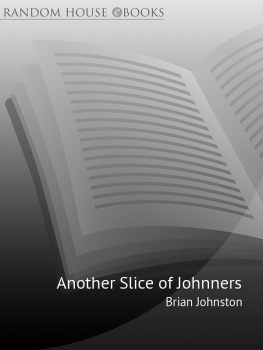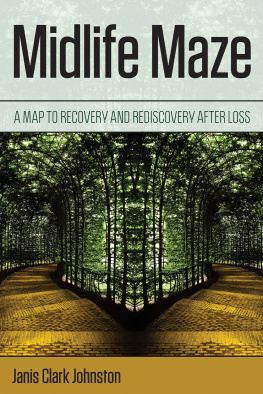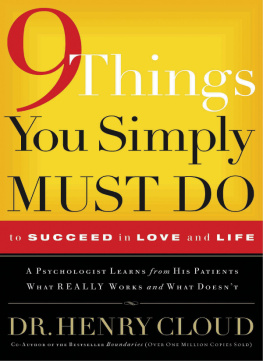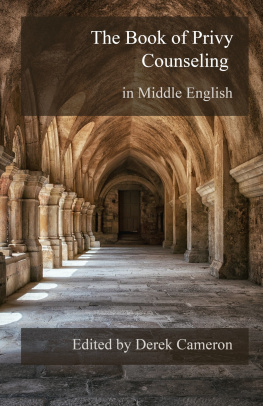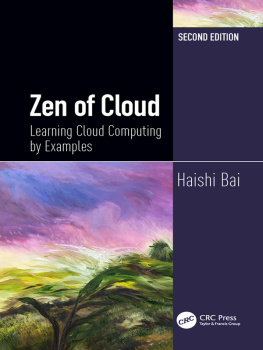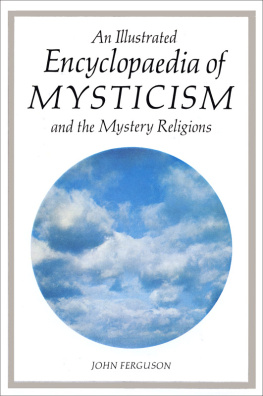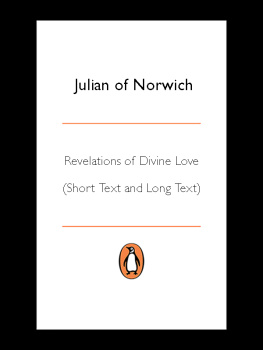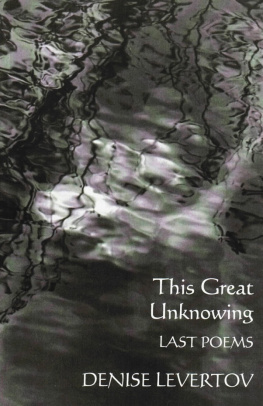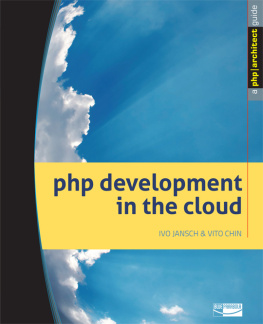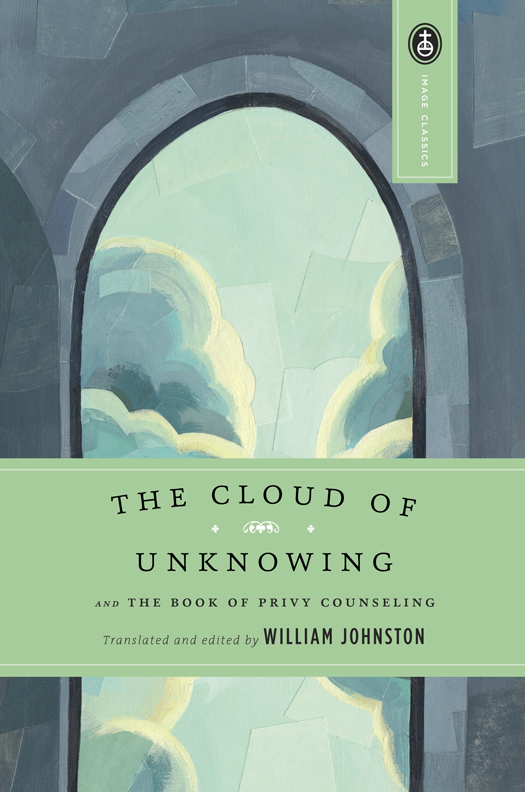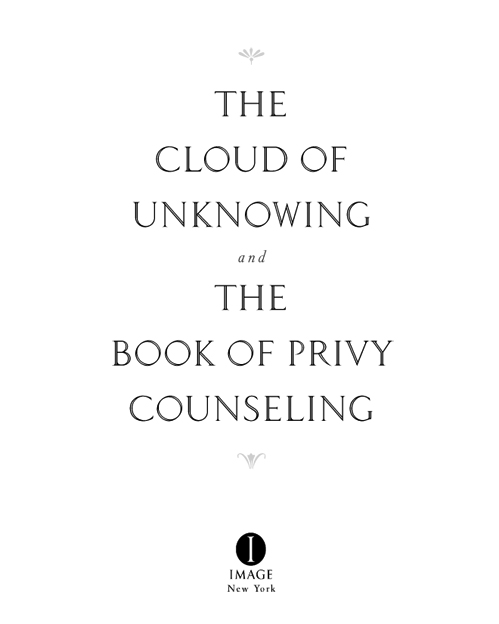Copyright 1973 by William Johnston Foreword copyright 1996 by Huston Smith Study Guide copyright 2014 by Image Books, an imprint of the Crown Publishing Group, a division of Random House LLC.
All rights reserved.
Published in the United States by Image, an imprint of the Crown Publishing Group, a division of Random House LLC, New York, a Penguin Random House Company.
www.crownpublishing.com
IMAGE is a registered trademark and the I colophon is a trademark of Random House LLC.
Originally published in different form in the United States by Image Doubleday, New York, in September 1973.
Library of Congress Catalog Card Number 73-79737
ISBN 978-0-385-03097-7
eBook ISBN 978-0-307-80905-6
Cover illustration by Darren Booth
Cover design by Jessie Sayward Bright
v3.1_r1
For Dan McCoy
CONTENTS
CHAPTER
ACKNOWLEDGMENTS
I wish to express my deep gratitude to the Reno Carmelites without whose kind help this edition could not have been made. In particular I would like to thank Laureen Grady for her painstaking work on the Middle English text and Elizabeth Reid for her beautiful typing. To the whole community I am grateful.
FOREWORD
Huston Smith
William Johnstons Introduction to this book places it in its historical setting so admirably that it frees me to make the only two additional points that I think might help the reader get into it. First, is there something about these final, countdown years of our millennium that justifies a new edition of this mystical text? And second, with all the commentary that has already been lavished on the key word in its title, unknowing, is there still something to be said about it?
On the first score, new winds of the spirit seem to be blowing today, the chief reason being that we no longer feel caged by science. Science itself never did cage us, but we built ourselves a cage from its reports, which we then unwittingly entered. Hearing from science only news of the physical universe, we jumped (illogically) to the conclusion that matter is all that existsor if not quite all, then at least the bottom line.
Quantum mechanics has changed that. From immaterial wave packets from which particles derive, to space whose ten original dimensions collapsed at the beginning of time to form the tiny superstrings of which subatomic particles consist, quantum mechanics is telling us that the universe of space, time, and matter derives from something that exceeds those matrices. Science doesnt go on to add what the author of the book in hand would have addedthat the transcendental object is Spiritfor science cannot deal with such things. But for those who have ears to hear, that possibility is there. It is as if seventeenth-to-nineteenth-century materialism was a tremendous storm that the jetliner Modernity has had to climb through to reach cruising altitude. We still havent quite reached that altitude, for cultural lag is a strong headwind. But brilliant patches of sunlight are breaking throughfrequently enough to remind us that the weather reports from traffic control towers include one we havent heard for a long time: Atmosphere clear, vision unlimited.
If those thoughts are suggested by the word cloud, what about the word unknowing?
If it were synonymous with ignorance it would not be interesting, but it takes only a page or two for us to realize that the author of this book is using the word in a vastly more portentous sense. For the ignorance that he is occupied withobsessed with would not be too strongis of a distinctive kind; it is the kind of which mysteries are constituted. Problems have solutions, but mysteries dont, because the more we understand a mystery the more we realize how much more there is to it than we had realized at the start. The larger the island of knowledge, the longer the shoreline of wonder.
Implicated with mystery, the cloud of unknowing will never disappear, but it can to some distance be penetrated. How? By activating a faculty of knowing that parts the obscuring clouds of words and thoughts. The underlying idea here is the limitations of language, and no topic has received more philosophical attention in the last half-century; Heidegger, Wittgenstein, and Derrida have all wrestled with it. But (to borrow a Buddhist figure of speech) though they see that language is only a finger pointing at the moon and not the moon itself, The Cloud surpasses them in attending more helpfully to the pointing finger. This is an important service, for on nights when the sky is overcast, it is important to know where to look for the moon if one hopes to catch glimpses of it through fleeting rifts in the clouds. Technically speaking, The Cloud uses kataphasis (what can be said) to face us in the direction where the moon hangs, and this positions us to take apophatic (unsayable) advantage of openings that appear. Unless the via negativa works with a solid via positiva to extend its trajectory, we are left looking around aimlessly and emptily.
How are we to penetrate the language barrier?
To pierce any obdurate object, say a block of ice, we need a pick with a sharp point and a heavy mallet to propel it. To obtain its sharp point, The Cloud advises compressing oceans of words, first into short phrases, and then (by further compression) into single syllables, the first of which is sin and the second God. These are anything but nonsense syllables. They are mantras that distilled generations of understanding down to single vocables. The word sin encapsulates the entire Christian understanding of our separation from God, and God connotes what we have been separated from and are returning to.
As for the mallet that empowers the mantra, it is love, lifes strongest force. But we should be clear. The love our author makes central to his method is more than an emotion. It is an informed emotion which responds to the object that attracts it. We do not know the full nature of that object, veiled as it is by the cloud we are seeking to penetrate. But we do know that if we knew it in its fullness we would find it more wonderful than words can describe and images depict.
Having said that, all I want to do is get out of the way as fast as I can and leave the reader with an author who understands these things far better than I do.
INTRODUCTION
Recent times have witnessed a revival of interest in Western mysticism. It is as though the West, long exposed to Zen and Yoga and the spiritual systems of the East, now searches for its own tradition and its own spiritual heritage. Strangely enough, the interest in mysticism is not just academic. It is also practical. Many people are anxious to read the mystics in order to practice the doctrine they teach and to experience the states of consciousness they depict. In short, interest in Christian mysticism is part of a widespread craving for meditation, for contemplation, for deptha desire to get beyond the changing phenomena and the future shock and the global village into a deeper reality that lies at the center of things. Mysticism is no longer irrelevant; it is in the air we breathe.
In such a climate, those in search of a mystical guide could do no better than turn to the anonymous fourteenth-century author of The Cloud of Unknowing. Here is an Englishman, at once a mystic, a theologian, and a director of souls, who stands in the full stream of the Western spiritual tradition. A writer of great power and of considerable literary talent, he has composed four original treatises and three translations; and in this book his two principal works,




